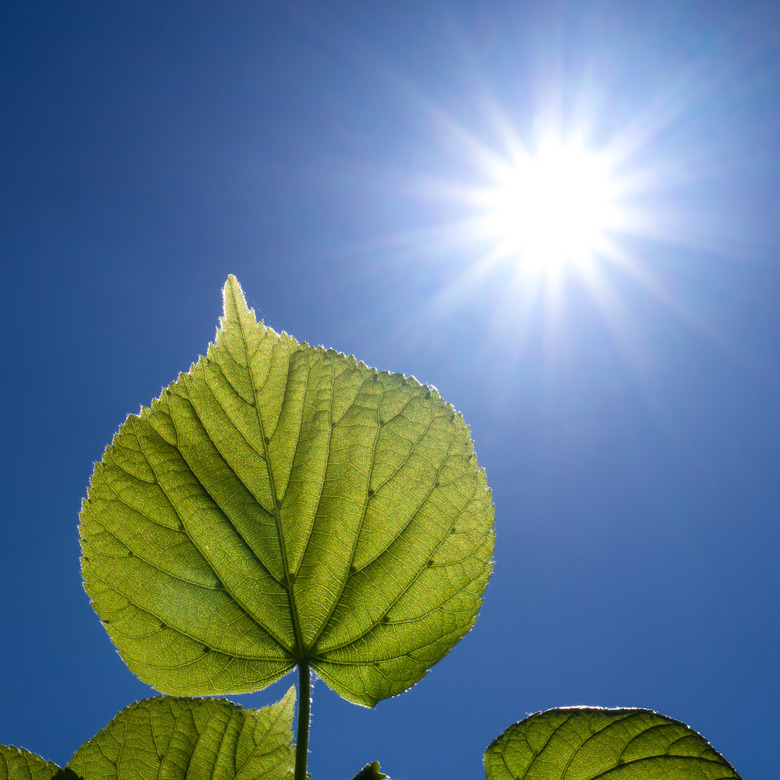Two Stages Of Photosynthesis
Photosynthesis represents the biological process by which plants convert light energy into sugar to fuel plant cells. Comprised of two stages, one stage converts the light energy into sugar, and then cellular respiration converts the sugar to Adenosine triphosphate, known as ATP, the fuel for all cellular life. The conversion of unusable sunlight makes plants green.
While the mechanisms of photosynthesis are complex, the overall reaction occurs as follows: carbon dioxide + sunlight + water —> glucose (sugar) + molecular oxygen. Photosynthesis takes place through several steps which occur during two stages: the light phase and the dark phase.
Stage One: Light Reactions
Stage One: Light Reactions
In the light-dependent process, which takes place in the grana, the stacked membrane structure within chloroplasts, the direct energy of light helps the plant to make molecules that carry energy for utilization in the dark phase of photosynthesis. The plant uses light energy to generate the co-enzyme Nicotinamide adenine dinucleotide phosphate, or NADPH and ATP, the molecules that carry energy. The chemical bonds in these compounds store the energy and are used during the dark phase.
Stage Two: Dark Reactions
Stage Two: Dark Reactions
The dark phase, which takes place in the stroma and in the dark when the molecules that carry energy are present, is also known as the Calvin cycle or C3 cycle. The dark phase uses the ATP and NADPH generated in the light phase to make C-C covalent bonds of carbohydrates from carbon dioxide and water, with the chemical ribulose biphosphate or RuBP, a 5-C chemical capturing the carbon dioxide. Six molecules of carbon dioxide enter the cycle, which in turn produces one molecule of glucose or sugar.
How Photosynthesis Works
How Photosynthesis Works
A key component that drives photosynthesis is the molecule chlorophyll. Chlorophyll is a large molecule with a special structure that enables it to capture light energy and convert it to high energy electrons, which are used during the reactions of the two phases to ultimately produce the sugar or glucose.
In photosynthetic bacteria, the reaction takes place in the cell membrane and within the cell, but outside of the nucleus. In plants and photosynthetic protozoans — protozoans are single-celled organisms belonging to the eukaryote domain, the same domain of life which includes plants, animals and fungus — photosynthesis takes place within chloroplasts. Chloroplasts are a type of organelle or membrane-bound compartments, adapted for specific functions like creating the energy for plants.
Chloroplasts -- An Evolutionary Tale
Chloroplasts — An Evolutionary Tale
While chloroplasts exist today within other cells, such as plant cells, they have their own DNA and genes. Analysis of the sequence of these genes has revealed that chloroplasts evolved from independently-living photosynthetic organisms related to a group of bacteria called cyanobacteria.
A similar process occurred when the ancestors of mitochondria, the organelles within cells where oxidative respiration, the chemical opposite of photosynthesis, takes place. According to the theory of endosymbiosis, a theory which was given a boost recently, because of a new study published in the journal Nature, both chloroplasts and mitochondria once lived as independent bacteria, but were engulfed within the ancestors of eukaryotes, leading ultimately to the emergence of plants and animals.
Cite This Article
MLA
Warmflash, Dr. David. "Two Stages Of Photosynthesis" sciencing.com, https://www.sciencing.com/two-stages-photosynthesis-5421327/. 25 April 2018.
APA
Warmflash, Dr. David. (2018, April 25). Two Stages Of Photosynthesis. sciencing.com. Retrieved from https://www.sciencing.com/two-stages-photosynthesis-5421327/
Chicago
Warmflash, Dr. David. Two Stages Of Photosynthesis last modified August 30, 2022. https://www.sciencing.com/two-stages-photosynthesis-5421327/
